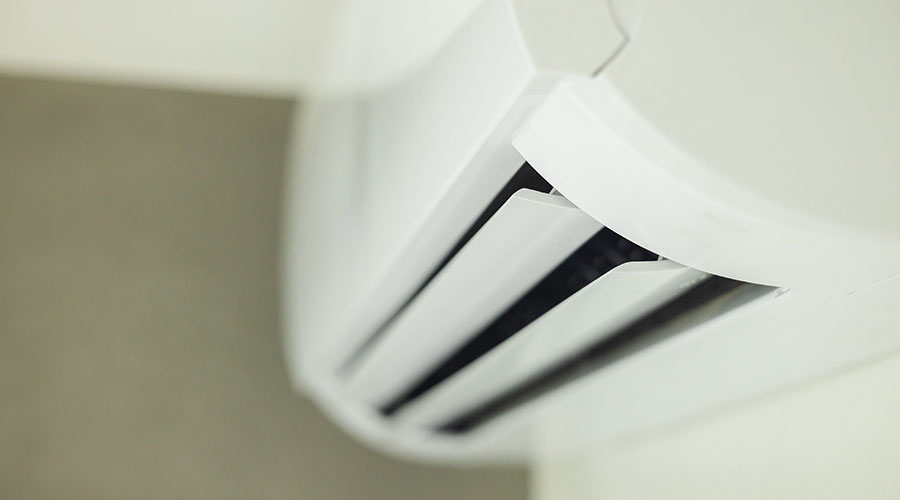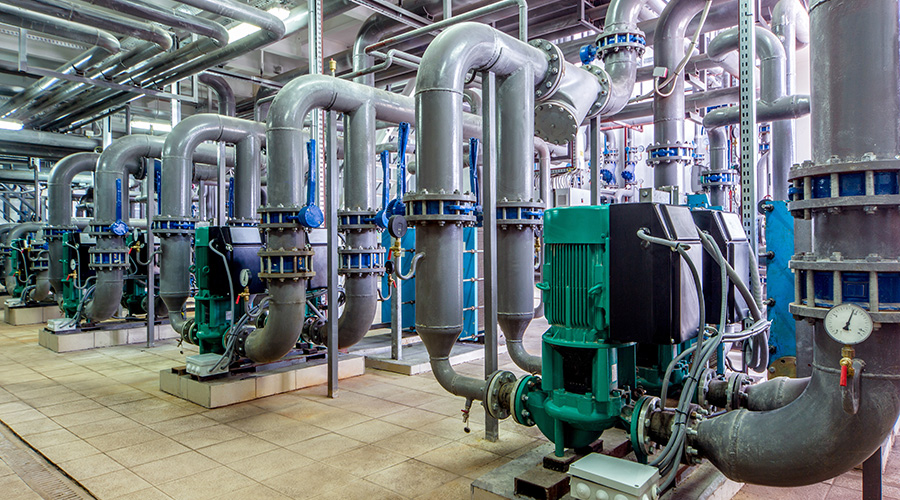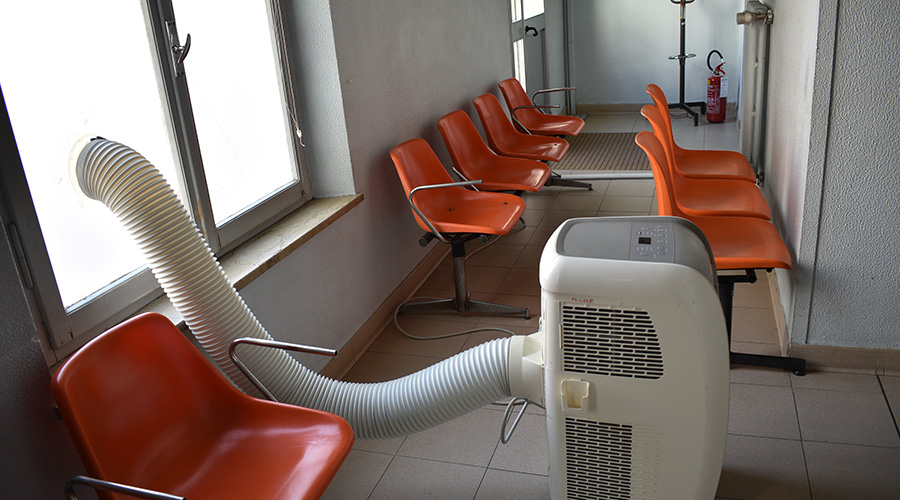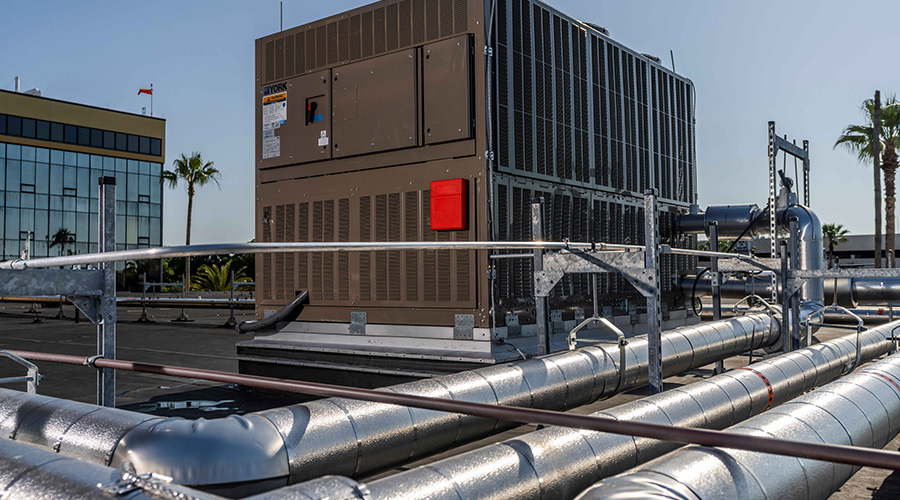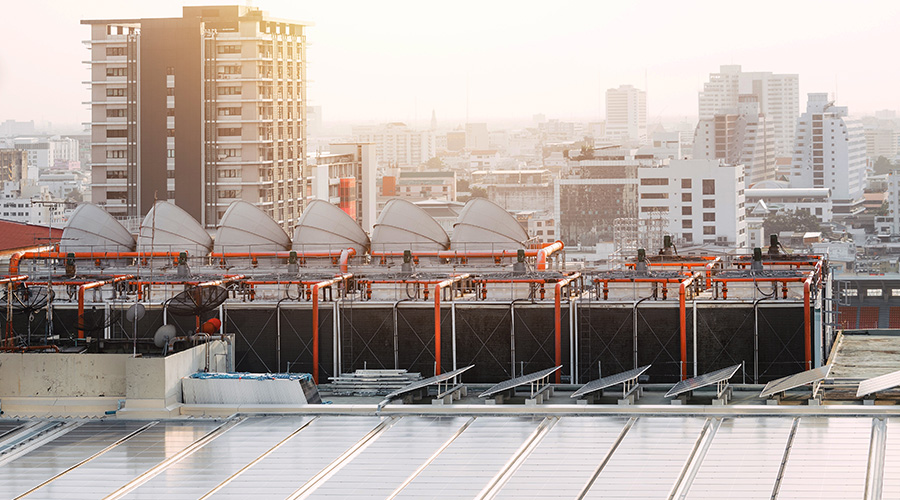Strategies for HVAC Systems
As energy costs rise, managers can soften the impact on budgets by focusing on key components
Heating and air-conditioning systems account for 50-80 percent of the total energy use in most commercial and institutional buildings. With such a high percentage of energy use concentrated in these two areas, it is no surprise that the recent rise in energy prices and concerns over energy supplier reliability have prompted maintenance and engineering managers to focus attention on these systems, particularly boilers and chillers.Even a slight improvement in the operating efficiency of these components translates into big cuts in energy use and costs. Suppose the average load on a large chiller plant is 3,000 tons. If a manager can improve its average operating efficiency from 0.91 kW/ton to 0.70 kW/ton, the monthly savings will top $27,000, assuming an average electricity cost of $0.06 per kWh.
While managers can take many steps to improve the operating efficiency of chillers and boilers, all energy-improvement programs should start by making existing equipment operate as efficiently as possible.
How can technicians achieve this goal? Two steps can enhance operation - monitoring and maintenance. Basic maintenance, such as cleaning and adjustments, will keep boilers and chillers operating so they minimize energy use.
But the only way to achieve peak operating efficiencies is to regularly monitor operating parameters. Data from a monitoring program will tell operators how to adjust the equipment and will identify the need for maintenance tasks.
Chiller Monitoring
Chillers present a challenge to managers when it comes to operating efficiency. While manufacturers rate chiller efficiency at full load, most building chillers rarely operate at full load. Part-load efficiencies are lower and vary with a number of parameters, including supply and return chilled-water temperatures, entering condenser-water temperature, and condenser and chilled-water flow rates.
Compounding the challenge is the level of precision needed in measuring each parameter to calculate efficiency accurately. An error of as little as 1 degree in water-temperature measurements can cause an error in the efficiency calculation of 1-2 percent. A similar error in flow measurement can result in an even larger error in calculating efficiency. Therefore, it is critical to install high-quality flow meters and temperature sensors and to maintain them properly.
To be effective, a chiller efficiency-monitoring program must be ongoing. As data is collected under different operating conditions, managers will develop an efficiency performance baseline for the chiller. Technicians should compare this baseline to the manufacturer's published performance curve to determine if the chiller is performing as efficiently as possible.
As data continues to be compiled, technicians will be able to monitor trends in performance. While managers can expect a slight deterioration in performance, due to normal wear and tear, they should look for trends that might indicate a need for maintenance, such as cleaning the chiller's tubes, a replacing refrigerant, or overhauling the chiller.
Fortunately, a new generation of monitoring equipment is available to assist managers in monitoring chiller performance. This equipment collects the necessary data and automatically calculates the chiller's efficiency.
The equipment then compares the operating parameters and the calculated efficiency to past performance values, triggering an alarm if a value falls outside the expected range. By constantly monitoring chiller operation, the systems assist in keeping chillers at peak operating efficiency, and they help technicians detect and troubleshoot problems.
Boilers
Efficiency calculations for chillers determine overall efficiency expressed as the ratio of energy input to energy output. Boilers require a different efficiency calculation - combustion efficiency.
A boiler's combustion efficiency measures how completely fuel burns and how effectively the generated heat transfers to water or steam. The measurement does not take into account heat loss from the boiler's surface, blowdown loss, or energy used by auxiliary equipment. With good test equipment, technicians can measure it with 98 percent accuracy or greater.
Managers have two reasons for using the combustion test instead of an overall efficiency test. First, it is practically impossible to measure all necessary parameters accurately, including the energy content of the fuel. More importantly, boiler losses excluded from the combustion efficiency calculation remain relatively constant. While technicians need to check them periodically, they do not require ongoing monitoring.
Combustion-efficiency testing is one of the most accurate means of adjusting a boiler and its auxiliary equipment for both safe and efficient operation. To do so, technicians can install a portable unit temporarily on a boiler for testing or permanently for ongoing monitoring.
Technicians most often use oxygen sensors to test a boiler's combustion efficiency. The equipment uses an electronic sensor in the boiler's flue that measures oxygen in the flue gas. Changes in combustion efficiency, such as those caused by varying levels of excess air, show up as varying levels of oxygen in the flue gas.
For small boilers, technicians most often use a portable combustion-efficiency tester setup at the beginning of every heating season. By adjusting the boiler each year, managers can achieve higher levels of operating efficiency in multiple small boilers without making a significant investment in equipment.
Medium-sized boilers can use the same setup, but technicians can achieve greater efficiency by testing the boiler at least monthly during the heating season. For larger boilers, it is most effective to permanently install the equipment and connect it to the boiler's control system. In this configuration, technicians can use the equipment to adjust the boiler under all heating loads to achieve the most efficient operation.
Pumps
Managers often overlook pumps when looking for ways to improve HVAC system operating efficiency. As a result, inefficient pump operation can go uncorrected for the life of the system. And with most HVAC system pumps operating when the system operates, inefficiency can result in large amounts of lost energy.
Perhaps the most important factor when installing pumps is that specifiers must match them to the system's requirements. As the flow rate increases or decreases from the design point of the pump, the efficiency of the pump decreases. So it is important that managers select a pump based on the system's required flow rate and the pressure exerted on the pumping system. If the system must operate over a range of flow rates, a variable-speed pump system provides the best operating efficiency.
Once in operation, technicians should periodically test pumps for proper flow rate and pressure differential. And they should plot readings against the manufacturer's pump curve to determine if the pump is operating within its specified range.
James Piper, P.E., is a national consultant based in Bowie, Md., with more than 25 years of experience in facilities maintenance and engineering issues.
Variable-Speed Drives, Constant Savings
Centrifugal chillers are very efficient devices for generating chilled water. New-generation chillers offer operating efficiencies approximately 0.50 kW/ton of cooling at rated load. One ongoing problem with the operation of these chillers, however, is a significant drop-off in operating efficiency as the load on the chiller decreases.
For example, that same high-efficiency chiller might have an operating efficiency of only 0.75 kW/ton at 50 percent loading. Further decreases in the cooling load result in even further decreases in operating efficiency. With most centrifugal chillers operating below peak load 95 percent of the time, part-load operating efficiencies become an important factor.
Using a variable-speed drive (VSD) can effectively improve the part-load operating efficiency of a centrifugal chiller. VSDs regulate the speed of the chiller by varying the voltage and frequency of the power to the chiller's drive motor.
As the chiller's cooling load decreases, the VSD slows the drive motor. This reduction in speed decreases the chiller's capacity, and it decreases the power drawn by the chiller's drive. The result is that the unit's efficiency decreases only slightly as the load decreases.
Monitoring the efficiency of a chiller with a VSD provides the same benefits to managers as monitoring one without a VSD. They can establish baseline performance, and they can develop trends in performance by comparing measured energy efficiencies with the baseline values.
They also can develop intervals for maintenance tasks based on needs using compiled data, rather than standard intervals. Ongoing monitoring will help keep the system at its peak operating efficiency at all cooling loads.
- James Piper
|
Related Topics:






